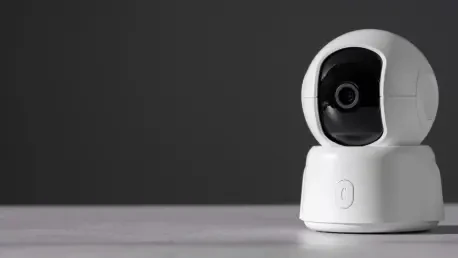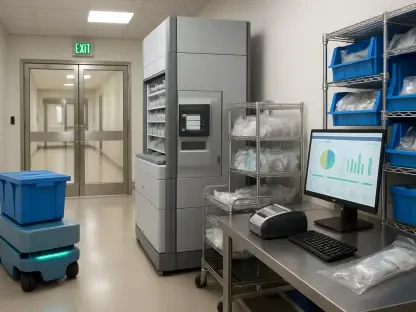In a world where technological advancements rapidly shape everyday life and operations, the Internet of Things (IoT) stands out as a transformative force. Among its many applications, IoT cameras have emerged as vital tools in sectors such as healthcare, manufacturing, and security. These devices facilitate real-time monitoring and data collection, enabling smarter solutions and enhanced operational efficiency. However, despite their utility, a growing security crisis surrounds these cameras, exposing significant privacy risks. With over 40,000 cameras worldwide reportedly accessible online without adequate protection, this oversight presents grave threats to individual privacy and organizational security, particularly in sensitive areas such as data centers and healthcare facilities.
Vulnerabilities and Their Roots
Cost Over Security: The Core Dilemma
The burgeoning issue of IoT camera vulnerabilities is exacerbated by a prevailing trend in manufacturing and design. A preference for cost-effectiveness and ease of use has led to the production of devices that often disregard robust security protocols. This oversight has not occurred in isolation; manufacturers are under constant pressure to deliver affordable and user-friendly options. However, this comes at a perilous cost, leaving cameras susceptible to unauthorized access and exploitation by cybercriminals. As a consequence, the prioritization of accessibility over security manifests in weak configurations, such as default passwords that remain unchanged, and a lack of encryption—both of which are key errors placing these devices at risk across different sectors.
Lack of Awareness and Expertise
While manufacturers play a critical role, the responsibility does not rest solely upon their shoulders. End users, including small businesses and larger enterprises, often lack the necessary awareness or expertise to recognize potential security hazards associated with their IoT devices. This deficit impedes their ability to implement necessary safeguards effectively. With organizations widely deploying these cameras without stringent security checks, devices remain exposed to unauthorized access. Cybercriminals can easily exploit predictable credential patterns and unprotected networks. There is a discernible gap in understanding security fundamentals, as many users may not possess the technical knowledge or resources required to secure their systems adequately. As a consequence, organizations are left vulnerable to both privacy breaches and operational disruptions.
Impact and Consequences
National and Global Security Concerns
The geographical spread of vulnerable IoT cameras across continents, including a substantial number located in the United States, amplifies both national and global security concerns. Countries with significant investments in IoT infrastructure face the dual threat of domestic privacy invasions and potential impacts on national security. With data breaches capable of compromising sensitive information and national interests, the resulting threat landscape extends beyond individual breaches to become a matter of public and state security. The convenience of IoT technology inadvertently expands the attack surface, providing an exploitable entry point for malicious actors to disrupt critical operations.
Implications for Privacy and Regulation
The consequences of failing to address IoT security concerns are profound, encompassing potential violations of privacy laws. Regulatory bodies are thus called upon to implement and enforce stringent guidelines governing IoT deployments. The lack of secured connections and data protection can lead to severe repercussions for organizations failing to comply with established legal standards. There remains a pressing need to safeguard user data against unauthorized access, ensuring compliance with global privacy regulations. In this context, inadequate security measures invite both legal and reputational risks, compelling organizations to reassess their priorities and address security vulnerabilities proactively to avoid liabilities.
Toward a Secure Future
Industry Accountability and Innovation
For a comprehensive approach to resolving these security issues, accountability and innovation within the IoT ecosystem are paramount. Manufacturers must take decisive action to implement enhanced security features, such as unique default passwords and regular firmware updates. By embedding security into the design phase of IoT products, manufacturers can address vulnerabilities more effectively. Additionally, they can prioritize advanced encryption techniques and secure communication channels, safeguarding transmitted data. These proactive measures expedite the prevention of breaches and significantly reduce their potential impact, fostering an environment in which technological advancements do not compromise safety and privacy.
Collaborative Security Measures
Organizations must adopt collaborative security measures to tackle the growing security threats posed by IoT cameras. Collaborative efforts among manufacturers, users, and regulatory bodies can ensure that security standards are upheld. Training programs and awareness campaigns for end-users can help bridge the knowledge gap and encourage the adoption of best practices. By fostering a cooperative approach, the industry can better equip itself to safeguard the delicate balance between innovation and security in the IoT landscape.









